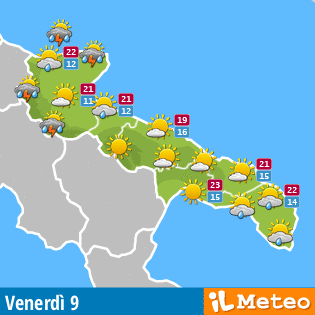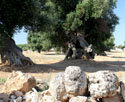Alberobello
Info Alberobello
-
Region:
Provincie:
Municipality:
CAP:
Area code:
Surface:
Population:
city hall:
-
Apulia
Bari
Alberobello
70011
080
40,34 Kmq
10.870
Piazza Del Popolo 31
Alberobello, a set of Trulli which became a U.N.E.S.C.O. World Heritage Site
Alberobello is a really singular city thanks to its trulli, which are famous all over the world. They are dry-stone buildings characterized by white lime walls and grey stones used to realize the typical cone-form roofs. The town expands on two hills; the first lies east and includes the modern part of the city; the second lies west and there we find the quarters Monti and Aia Piccola, which represent the monumental area marked by the trulli: this area has been declared a U.N.E.S.C.O. World Heritage Site in 1996.
The agricultural landscape is characterized by thick vegetation, rich of almond and olive trees which thrive in karstic ground. Calcareous stratified rocks are the source of building materials used to realize the typical roof covering of the trulli of Alberobello from the time of its birth. It is worth mentioning the Trullo Sovrano, which is the biggest one and the only one with two floors; the Trulli Siamesi, which are two domes placed side by side, and the Casa D’Amore which is the first lime building realized after the end of the feudal rule.
Following the architectonic style of the trulli with their typical cuneiform domes, the church of Sant’Agostino was built in 1927, on the top of the quarter Monti. The history of Alberobello is deeply linked with that of the Acquaviva D’Aragona family, earls of Conversano, who had dominated the city until 1797. The earls forced the colons, who had placed themselves in the wood of Alberobello, to build dry-stone houses, that is to say without using mud so that they could be easily destroyed in case of royal inspection. By this stratagem the earls avoided the payment of a tax to the King of Naples, which was due to the foundation of a new town.
Alberobello remained under the power of the Acquaviva d'Aragona family until the 27th of May 1797, when the King Ferdinando IV di Borbone granted the request of the inhabitants of Alberobello conferring to the small village the title of royal city, banishing the feudal servitude. The history of these really special buildings is linked with an edict of the Kingdom of Naples, which imposed a tax on every urban settlement in the 15th century.
Having to build their houses using only stones, the colons found the best solution in the structure characterized by a round base and a cuneiform dome, which bears on itself thanks to its concentric centres realized putting stones one on the other.















